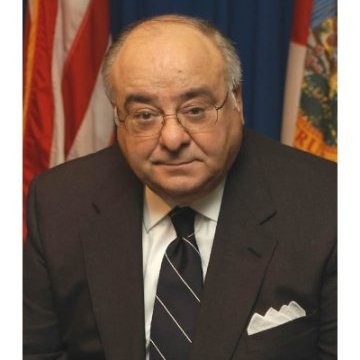
Title: Crime Scene Investigation and Management
Chairman and Plenary Presentation
Prof. Anthony Schembri
Former Police Commissioner in New York, USA
Abstract
This will be a presentation of real crime scenes and the management of efforts bringing together the forensic experts and the investigative personal to solve real cases. Having lead the Homicide Department department unlike CSI and other programs, police fail to collect and properly analysis a crime scene which I will demonstrate. We need to in terpret crime scenes. Sloppy police investigations, lazy forensic personnel team up to reduce the ability to solve cases with solid evidence. The research profession needs to catch up with policing, corrections and juvenile jus tice, and define a role for itself in the problem solving process. The research community needs to find ways to bring its analytical skills, its objectivity, its rigor, its independence, its ability to link theory and practice, into the messy arena of contemporary practice. Although we have made progress, the need is tremendous.
Biography
Anthony Schembri is a respected law enforcement and academic professional with over four decades’ experience in the field. Over the years, he has drawn praise from such varied sources as New York City Mayor, President Jimmy Carter, Florida Governor Jeb Bush, and New York Governor Mario Cuomo. First appointed to the Brooklyn District Attorneys Office he advanced to Deputy Chief of the Narcotics Bureau, then to Director of Training at the District Attorneys Police Academy. Anthony Schembri has served as the city’s Deputy Inspector General, investigating cases of major crime and corruption. He was appointed by the Mayor of New York as Corrections Commissioner, a position putting him in charge of 12,000 uniformed officers and 20,000 inmates at 19 separate jail facilities. Today, the Citrus County, Florida, resident serves as a Visiting Professor at Oxford and Sheffield Hallam University and named Outstanding Professor of the Year at the University of Florida.

Title: Ultrastructural investigation in the brain of Sudden Infant Death (SIDS) and Sudden intrauterine (Siuds) Unexplained Death Syndromes
Plenary presentation
Dr. Antonietta M. Gatti
Nanodiagnostics Foundation, Italy
Abstract
A novel autopsy approach was performed on brain samples from: 5 cases of SIDS; 5 cases of SIUDS; and 10 cases of infants who died after birth, or after abortion due to unknown. The in-depth histopathology analyses on SIDS and SIUDS cases revealed presence of morphological and functional abnormalities in analyzed brain structures. However, this does not explain the mechanism of death. For that a prototypal investigation was set up by using Field Emission Gun Environmental Scanning Electron Microscope (FEGESEM) coupled with an Energy Dispersive Spectroscopy (EDS) on the same brain tissues used for histopathology analysis, in order to verify presence of inorganic lethality co-factors. Our results show that beyond the blood-brain barrier, there is unusual chemical modifications of the brain cells, as well as massive presence of inorganic micro- and nano- sized particles of different chemical compositions. The presence of particle matter (PM) was statistically non-exclusive to the SIDS-SIUDS groups, however, a hypothesis that sudden deaths in SIDS-SIUDS could have a common cause, due to fetal brain contamination by micro- and nano- sized foreign bodies was advanced. In addition, the investigation strongly suggests that inside mother’s womb the PMs can get transferred from mother’s to the fetal bloodstream, contributing to the abnormal developmental and structural alterations of vital brain centers, detrimental to the fetus survival. A strange transformation in the chemical content of some cells was detected.
Biography
Dr. Gatti has a degree in Physics and the PhD in Bioengineering. In 2012 she was honoured with an International Fellowship by the world Societies of Biomaterials and Engineering (FSBE). At present she is Vicepresident of the Nanodiagnostics Foundation with a specific mission on the health of babies and is supervisor of the scientific laboratory of the Foundation where a Field Emission Gun environmental Scanning Electron Microscope works for the nanopathologic studies. He is past-Professor of Biomaterials at the Faculty of Biotechnologies at the University of Modena-Reggio Emilia (Italy) and director of the Laboratory of Biomaterials. She was Consultant of all the Governmental Commissions on Depleted Uranium and related diseases and had 2 auditions at the House-of-Lords in London and collaborated with the Department of Defense in USA. She was Coordinator of the nano-eco-toxicological Project of the Ministry of Defence of Italy and coordinated two EU research projects of Nanopathology, Nanotoxicity and of Nanoecotoxicity.

Title: Exploring the operational functioning of the SAPS Forensic Science Laboratory (SAPS-FSL) - A literature review-based perspective
Keynote Presentation
Edward Khomba Ngokha & Prof. Bernadine Benson
University of South Africa South Africa
Abstract
Forensic science plays a critical role in the South African criminal justice system, with the effectiveness of the South African Police Service Forensic Science Laboratories (SAPS-FSL) being central to the timely resolution of cases. Despite their importance, SAPS-FSLs continue to face systemic challenges, including persistent backlogs, limited infrastructure, inadequate staffing and inconsistencies in quality management. This review-based study investigates the operational functioning of SAPS-FSL by analysing relevant academic literature, national policy frameworks and international best practice benchmarks. The review identifies significant structural and procedural shortcomings that impact the laboratories’ efficiency and ability to support the justice system. It also establishes a conceptual basis for future empirical research and policy recommendations. Main findings highlight the urgent need for a national forensic strategy prioritising quality assurance, resource allocation and sustained investment in staff development and laboratory infrastructure. Addressing these issues is essential to enhance the performance of forensic laboratories and uphold the integrity of criminal investigations and judicial outcomes in South Africa.
Biography
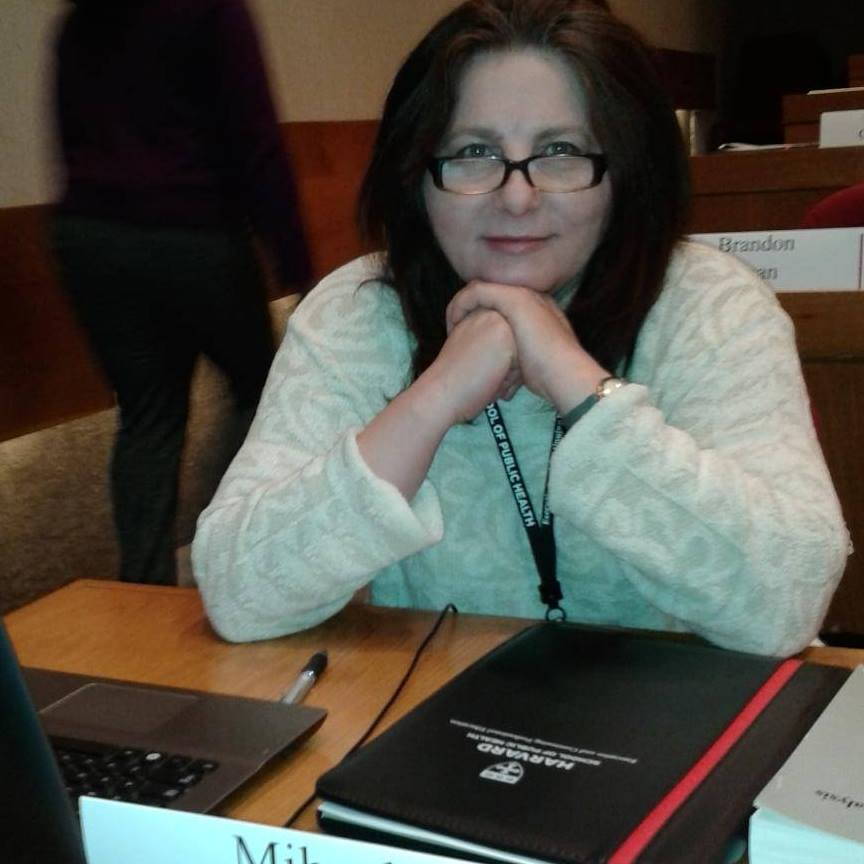
Title: Murder-Suicide as the Final Act of Domination: A Behavioral Reconstruction
Plenary Prestation
Mihaela Brooks
Criminal investigative analyst/Offender Profiling, Canada
Abstract
Biography
Criminal Investigative Analyst Criminal Intelligence Analyst Geographic Profiler GPA I Certified Anti-Terrorism Specialist.

Title: Application of blockchain technology in the chain of custody
Keynote Presentation
Dr. Magdalena Zamroczyńska
University of SzczecinPoland
Abstract
The validity and integrity of digital evidence and the chain of custody are crucial to all digital forensic investigations. All new evidence and access logs of the original evidence should be logged in a document called the ‘chain of custody’. In a traditional digital investigation, trusted parties, such as an investigator, are allowed access to the digital evidence and follow a strict process when dealing with data. These trusted parties have the capability to alter the data making the evidence inadmissible in a court of law. Alternatively, these trusted parties may also alter the data accidentally or with malicious intent, due to a lack of transparency and non-repudiation. Blockchain technology can solve this issue, however, existing research shows that adopting blockchain does not provide adequate transparent access control mechanisms. Consequently, this makes blockchain difficult to adopt due to the one-to-one mapping and the inability to easily validate the chain of custody and evidence admissibility. Current methodologies rely on an external off-chain access control mechanism, which, regrettably, remains susceptible to potential breaches that could compromise its integrity and validity. Therefore, it would be appropriate to propose an enhanced model to provide access control through smart contracts, ensuring immutability, flexibility, transparency, and non-repudiation of both the access control mechanisms and the digital evidence itself by moving the access control mechanism to the blockchain. This tracks any changes made through the access control mechanism, further ensuring transparency and integrity
Biography
Magdalena Zamroczyńska obtained her PhD degree in law from Adam Mickiewicz University in Poznań (Poland), in the field of criminal procedure in 2016. She currently works as an assistant professor at the University of Szczecin (Poland), where she continues her scientific development in the field of criminal procedure and medical law. She has published over 50 articles in renowned journals and books. She is an active attorney representing parties in court in criminal proceedings.

Title: Forensic archaeology in Brazil: expanding interdisciplinary studies in criminal investigation
Keynote presentation
Prof. Claudia Ines Parellada
Paranaense Museum and Federal University of Paraná, Brazil
Abstract
Forensic archaeology in Brazil has been achieving good results in new approaches that combine archaeological theories and methodologies with analyses of criminal justice contexts. Many studies in partnership with police teams, integrating different strategies and interdisciplinary studies, have shown the importance of archaeology especially in the descriptions of crime scenes and areas with human skeletal remains in the subsurface. Some data will also be presented regarding different cases that aimed to characterize the origins and contexts of cultural assets associated with vandalism, illegal trade and national and international trafficking. Technological innovations will also be highlighted, as well as the potential and diversity of research horizons in forensic archaeology, with updated debates intertwined with Brazilian public security departments and the ongoing training of Brazilian experts.
Biography
Claudia Ines Parellada has completed her PhD in Archaeology at University of Sao Paulo, Brazil, in 2006, and she was the chief of Archeology Department at Paranaense Museum, in Curitiba, since 1990. She has been working as a Professor of Master and PhD Program in Anthropology anda Archaeology, Federal University of Paraná (UFPR) in Brazil since 2021. She has published more than 100 papers in brazilian and international journals and works in partnership with police teams in Brazil, and a TED X speaker in 2019.
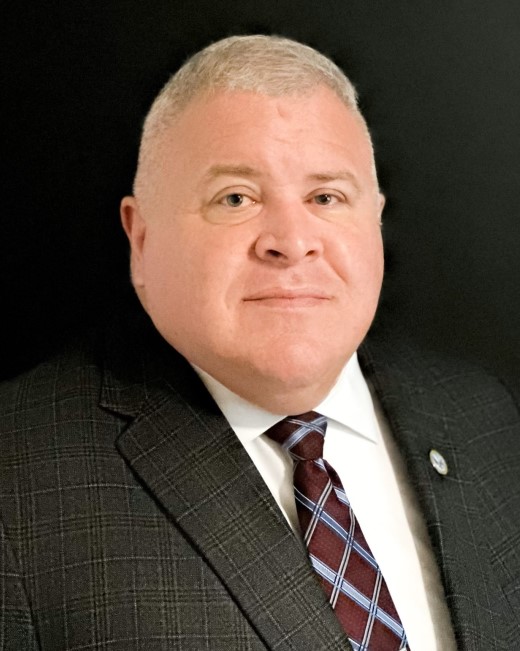
Title: Bridging the Behavioral Divide: Integrating Advanced Network Forensics with Forensic Cyberpsychology for Enhanced Digital Investigations
Keynote Presentation
Dr. Marshall S. Rich
Capitol Technology University and US Institute of Peace, USA
Abstract
In the face of increasingly complex and psychologically driven cyber threats, traditional forensic approaches often fall short of capturing the full scope of human behavior behind digital attacks. This presentation introduces a novel interdisciplinary framework that merges Advanced Behavior-Based Network Forensics (BBNF) with the emerging field of Forensic Cyberpsychology. This innovative approach is designed to uncover not just the 'how' but the 'why' behind cybercrime, addressing the limitations of current methods.
Behavior-based network forensics enables real-time detection of anomalous user activity, offering a lens into digital patterns and deviations from normative behavior. By integrating forensic cyberpsychological analysis, grounded in the study of offender typologies, cognitive biases, and psychological motivators, we can significantly enhance the attribution and profiling of cyber actors. This integration underscores the crucial role of understanding offender psychology in combating cybercrime, making us more aware of the human element in these digital attacks.
This session explores the practical applications of this integration, equipping the examiner with the knowledge to address a range of cyber threats. From insider threat detection to digital deception analysis, cyberbullying investigations, and ideological cybercrime, this approach offers a comprehensive toolkit. Real-world case scenarios will illustrate how behavioral network telemetry when interpreted through a forensic psychological lens, provides deeper insight into intent, escalation patterns, and the offender's mindset.
By the end of this session, participants will have a clear understanding of how cross-disciplinary tools and models, such as behavioral analytics engines, cognitive profiling matrices, and anomaly-driven forensics, can significantly enhance both criminal investigations and proactive cyber defense. The talk concludes by proposing a research-informed model for operationalizing this hybrid approach in forensic settings. This model, which bridges technical telemetry with psychological insight, promises to strengthen the future of digital investigations, underscoring the value of the presentation for the audience.
Biography
Dr. Marshall S. Rich, a Ph.D. candidate in Cyberpsychology at Capitol Technology University and Senior Expert for Cybersecurity at the US Institute of Peace, leverages his multifaceted background in military, government, and corporate sectors. His work is centered on integrating psychology with cybersecurity to formulate proactive risk mitigation strategies. Dr. Rich's goal is to enhance organizational cybersecurity resilience by understanding the psychological aspects of cyber threats and bridging human behavior with technological defense systems. His extensive education includes a Doctor of Business Administration, an M.A. in Computer Resources, and a B.B.A. in Business Information Systems.
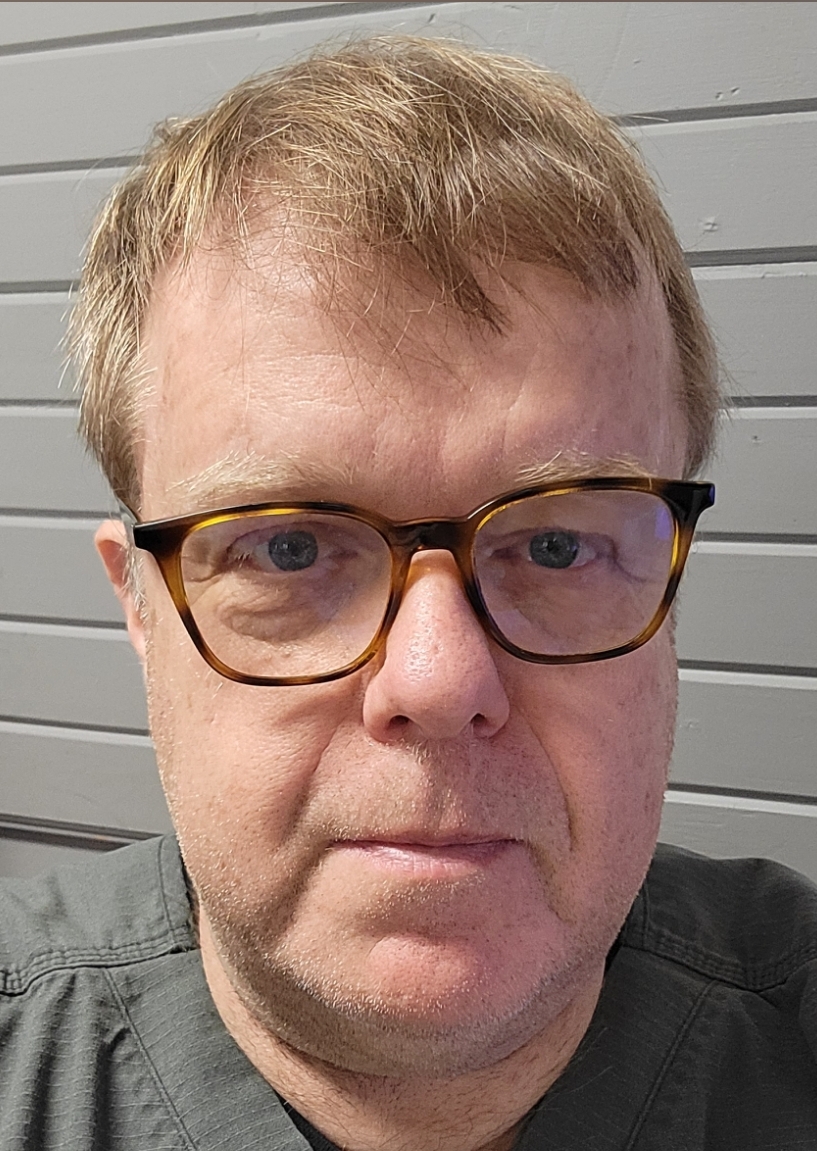
Title: Child Sex Rings---Epstein, Hollywood, 9th Circle Child Cult
Keynote Presentation
Dr. James Frizzell Dentist
Frizzell DentalCanada
Abstract
The references below show that this presentation is not a conspiracy theory, but reality. This topic intersects with the topic of forensic criminology. THE USA Justice Dept acknowledges the child trafficking and sometimes child cult sacrifices. Quote from USA Dept of Justice: “Based on interviews with investigating police officers, medical and psychiatric experts, practitioners of white and black arts, and cult victims, this book presents information of the beliefs and practices of various cults in America and offers evidence of associated crimes, including ritualistic child sexual abuse, child sacrifice, homicide, animal mutilations, and vandalism.”
The subject contents are so crazy that it makes it hard to believe. China is also involved in fentanyl drug trafficking that overlaps with China sex trafficking. Many other countries are addressed in this presentation by James Frizzell.
Biography
Dr. James graduated from a one-year course, McGill University, Dental Forensics Program; part on-campus training with the Surete du Quebec Forensics Team. Dr James is focusing on Child Abuse, Elderly Abuse, Human Trafficking, and Intimate Partner Violence. He also gives educational PowerPoint presentations on these topics. Also, trained at University of Tennessee, Body Farm, and Clandestine Grave Recovery. Dr Frizzell’s motto is: “The Power of Observation”, in the forensic’s world.

Title: Emotional graphology
Keynote Presentation
Zaida Melissa Guajardo
Grafologico ZG, USA
Abstract
Emotional graphology is an emerging scientific discipline within the broader field of graphology that investigates the emotional dimensions of personality as reflected in handwriting. Positioned as a psychological research method, it offers a nuanced approach to understanding normative and pathological emotional states. By analyzing handwriting features, emotional graphology provides insights into how individuals perceive, express, and regulate their emotions. This method has demonstrated practical value for professionals in psychiatry, psychology, education, and medicine, and is gaining traction in applied fields such as personnel selection and forensic analysis. The methodology includes a structured application guide and practical exercises, enhancing its accessibility and utility. A specialized focus on children's handwriting further extends its relevance, offering early detection of emotional disturbances and a foundational protocol for intervention. Emotional graphology thus represents a valuable interdisciplinary tool for psychological assessment and emotional diagnostics.
Biography
Zaida Melissa Guajardo, Criminal Profiler, Handwriting Analyst, Grapologist. Bachelor's Degree in Criminal Justice Forensic Investigations National University Master's Degree in Criminal Profiler Escuela Internacional de Criminologia y Criminalistica.Professional Technology in Graphology and Graphotherapy.
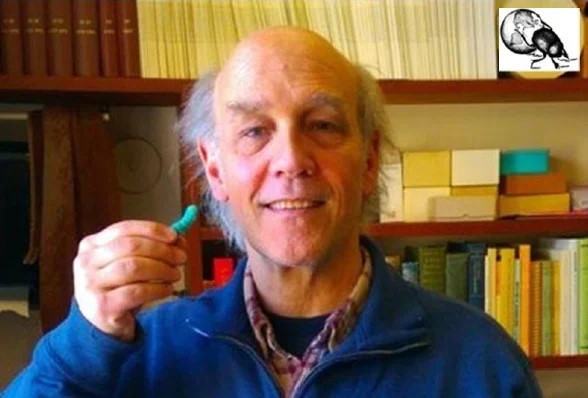
Title: Grime Scene Investigation – What might be present during an investigation
Keynote Presentation
Louis N Sorkin
Entsult Associates, INC USA
Abstract
Most people, when asked about forensic entomology, imagine various flies and beetles because they are familiar with homicide investigations and TV shows; some will have knowledge of the 3 major disciplines in forensic entomology including Urban Entomology, Stored Products Entomology, in addition to the aforementioned Medicolegal Entomology or Medicocriminal Entomology (formerly Forensic Medical Entomology). The presentation today deals with insects that may be found at various locations depending on what business is at that location with respect to food processing and food service, plumbing issues, sanitation and hygiene of various sorts associated with improper or misunderstood cleaning techniques. Depending on the crime scene, various “atypical” insects might be active, and their presence could be attributed to commercial and personal food storage and preparation, unforeseen plumbing issues, cleaning and washing techniques, plus other procedures deployed in manufacturing facilities, structural and architectural building issues, and normal employee behaviors that initiate introduction and propagation of certain pest species. Of course, houses and apartment buildings as well as hospital patient rooms and surgeries occasionally can exhibit insect infestations to varying degrees. Surgeries can have drain infestations and waiting rooms may become infested with bed bugs and occasionally with human body, head and pubic lice.
Biography
Louis Sorkin received his Masters of Science in Entomology from the University of Connecticut, at Storrs and began his entomological career of over 43 years in the Department of Entomology (Division of Invertebrate Zoology) at the American Museum of Natural History, New York City, working on arachnid systematics and insect cuisine. He also curated the extensive, preserved arachnid and myriapod collections. He has worked with pest management companies and has taught recertification courses over the years relying on proper identification and ecology to manage and control pest species. He is the principal entomologist and founder of Entsult Associates, Inc.

Title: Forensic Validation & Its Crucial Role in Digital Forensics
Keynote presentation
Robert B. Fried
Sandline Discovery LLC, USA
Abstract
Forensic validation is an essential aspect of digital forensics. The phrase trust but verify is an important one. Although we have a certain level of trust in our tools, we cannot say for certain that it does what it claims to do, until we see it with our own eyes. There is a lot at stake in investigstions or litigation, and leveraging more than one tool in or toolkit - may allow us to see data of interest with a different set of glases - possibly a new perspective - where more, or less data may be availale for examination. Having multiple tools, may be more costly, but this additional investment, could be beneficial in uncovering important information.
Biography
Robert B. Fried is an experienced professional who has spent over twenty-two years collecting and investigating electronic evidence. He attained a BS and MS in Forensic Science, and certificates in Law Enforcement Science, Computer Forensic Investigation, and Information Protection and Security from the University of New Haven. Robert serves on the Board of Advisors for the Masters in Investigations program at the University of New Haven. Robert serves on the EC-Council Global Advisory Board for the Computer Hacking Forensic Investigator (CHFI) certification. He holds and actively maintains the following industry certifications: AccessData Certified Examiner (ACE), Certified Forensic Computer Examiner (CFCE), EnCase Certified Examiner (EnCE) and GIAC Certified Forensics Analyst (GCFA), C4 Certified Bitcoin Professional (CBP). Robert is a licensed Professional Investigator in Michigan and is a licensed Private Investigator in New York and South Carolina. He is the author of PI Magazine's Cybersluething Department, where he shares insightful content on topics relating to digital forensics, eDiscovery, data privacy, and cybersecurity. Robert is also the author of the books, Forensic Data Collections 2.0: The Guide for Defensible & Efficient Processes and Forensic Data Collections 2.0: A Selection of Trusted Digital Forensics Content (2023) & Second Edition (2024).

Title: Analyzing data exfiltration events in an M365 corporate environment
Keynote presentation
Gary Hunt
Sandline Discovery LLC, USA
Abstract
This presentation will examine the trail left behind from a data exfiltration attempt in a corporate Microsoft 365 environment, while also discussing safeguards that may be deployed. We will examine Microsoft Intune & audit logs from M365, and operating system & application artifacts from a bad actor's local Windows computer.
Biography
Gary is a qualified expert in digital forensics with over a decade experience in the field. He is highly skilled in forensic investigations and has testified as an expert witness over a dozen times. He is particularly versed in matters involving misappropriation of company resources, theft of intellectual property, and intentional destruction of data. In his role as Director within the Digital Forensics & Investigations practice, Gary leads day-to-day operations, conducts forensic investigations, and provides expert witness and testimony services to our law firm and corporate clients. He has a reputation for taking complex technical information and breaking it down into more easily understood concepts, which will prove to be invaluable to our clients. Gary graduated from Bloomsburg University of Pennsylvania with a bachelor's degree in Computer Forensics, and has earned various certifications throughout his career, most notably the CCE ("Certified Computer Examiner") and GCFE (“GIAC Certified Forensic Examiner”) certification. His recent professional highlights include being the computer forensic expert for the Steven Avery defense ("Making a Murderer"), founding a regional forensic lab for a global eDiscovery service provider, and assisting in the build-out of the Forensics & eDiscovery infrastructure within a large social media company.

Title: Crime Science in the 21st Century
Plenary presentation
Prof. Robert MILNE
European Forensic Institute/Honorary Editor Chartered Society of Forensic SciencesUnited Kingdom
Abstract
Crime Science must evolve to integrate modern policing techniques, forensic intelligence, GIS, criminology, crime analysis, the language of investigative psychology, and Evidence Based Policing (EBP). Moving beyond but encompassing 20th-century approaches like problem-oriented policing (POP) and rudimentary crime mapping. A comprehensive review of Crime Science's scope is needed to align with advanced investigative techniques. A critical focus is developing the three assets of intelligence-led policing: Systems, Knowledge, and Intelligence assets. However, GDPR restrictions hinder systems asset development modelling by limiting developers access to real data. To address this, Crime Science Ltd UK (Ian Oldfield et al.), has developed a **synthetic cyber city** with 110,000+ simulated inhabitants, providing a realistic data environment for crime analysis training and systems development. An overview of this approach is given in the presentation.
Biography
Professor and Dean of Applied Sciences European Forensic Institute. Between 1969 and 2008, he had a full career as a practitioner with the Directorate of Forensic Services New Scotland Yard, in the roles of Fingerprint expert, Crime scene Investigator, Crime Scene manager and Crime Scene Coordinator. In project management he created modern sequential treatment laboratories designed to deal with the volume crime in London and pioneered the concept of Forensic Intelligence. He set up one of the world’s first Forensic Intelligence Units in 2001 and was the Head of Forensic Intelligence Metropolitan Police until 2008. He has the Kings College London University Diploma in Crime Scene Investigation and Fingerprint Expertise. He developed the wireless, three electrode, method of electrostatic dust mark lifting, the Pathfinder’ now used worldwide. In 2012 he published the textbook ‘Forensic Intelligence’ CRC Press. In 2018 he joined the European Forensic Institute as a lecturer and was invited to lecture on Forensic Intelligence at the Istituto Di Scienze Forense, Corporate University, Milan. In 2021 he was awarded a Professorship in Criminology, Forensic Criminology and Forensic Intelligence and awarded the role of President of the Istituto Di Scienze Forense University Milan. In February 2024 the university renewed his professorship. He has been a member of the Chartered Society of Forensic Sciences (CSFS) since 1983, and in October 2024 was elected as the Honorary Editor of the CSFS.

Title: Risks associated with adult female rape perpetration in South Africa: Perspectives of post-rape services providers
Speaker presentation
Dr. Nigel Bradely Bougard
University of South Africa, South Africa
Abstract
Risks contributory towards adult female rape perpetration in South Africa comprise of two dominant factors being structural (lack of infrastructure, poverty) and behavioural (unequal gender power relations, victim vulnerability). This study investigated the observations of 28 post-rape service providers regarding the causative risk factors linked to adult female rape in South Africa. A qualitative positivist research approach enabled the researcher to explore and describe the subjective perspectives of post-rape service providers. Applied intervention research, more specifically an instrumental case study design guided the study. Stratified probability sampling was utilised to articulate the viewpoints of post-rape service providers. Data was collected at three medico-legal research sites in the Gauteng Province, with the aid of a semi-structured interview schedule. The empirical findings were analysed according to thematic content analysis. Three victimological theories namely (a) lifestyle exposure theory, (b) routine activities theory, and (c) extended control balance theory formed the basis of the research. Seven themes emerged: (1) alcohol consumption and drug-facilitated rape; (2) crime of opportunity; (3) exposure to unsafe places; (4) poverty and unemployment; (5) accessing unsafe public and private transport; (6) financial dependence; and (7) rape as a perceived crime of power. The research findings propose key recommendations in curbing rape.
Biography
Dr. Nigel Bradely Bougard holds a MA and PhD in Criminology from the University of Pretoria (UP). He is as an academic and researcher at the University of South Africa (UNISA), Department of Criminology and Security Science. His research interests include violent crimes, political offences, economic crimes, gangsterism, victimology; and criminological assessment and evaluation of offenders. He is actively involved in postgraduate supervision and training of both honours and masters’ students. Dr Bougard comes with extensive practical and theoretical experience in both Criminology and Victimology.

Title: Child Abuse and Neglect: A Multidisciplinary Approach to Forensic Intervention and Prevention
Speaker Presentation
Noelia Gatell García & Marta Perales,
Spain
Abstract
Child abuse is a global public health issue that demands a comprehensive, multidisciplinary response. This presentation explores the multifaceted nature of child maltreatment, including physical abuse, emotional abuse, neglect, and sexual abuse, with special attention to underreported forms such as institutional abuse and psychological maltreatment. This study analyzes legal definitions, typologies, prevalence data from Spain and the United States, and the long-term consequences on victims' physical, emotional, cognitive, and social development. The work emphasizes the importance of early detection and prevention through coordinated efforts across legal, healthcare, educational, and social services. It highlights the role of forensic professionals in identifying abuse indicators, understanding risk and protective factors, and collaborating with authorities to ensure child protection. The real-life case of Gabriel Fernández is discussed as a tragic example of systemic failure and the urgent need for integrated action. In light of these findings, we advocate for a trauma-informed, victim-centered approach within forensic practice, ensuring children’s rights are prioritized in both judicial and clinical settings. This study contributes to the broader discussion on how forensic science can serve as a tool not only for investigation and prosecution, but also for social change and prevention.
Biography
Noelia Gatell García and Marta Perales Gómez are forensic experts based in Madrid, Spain, working internationally in the field of forensic psychology and criminology. Noelia holds degrees in Psychology and Criminology, a Master's in Health Psychology, and a Master's in Legal and Forensic Psychology. Marta holds a degree in Criminology and Master's degreesin Legal and Forensic Psychology, Forensic Science, and Legal and Forensic Medicine. Bothare certified in Legal and Forensic Medicine, with additional training in criminalistics, childsexual abuse, gender-based violence, neuropsychology, and forensic neuropsychology. With years of experience as forensic expert witnesses in Spain, they collaborate with legalprofessionals and institutions in a wide range of cases, including family law, criminalprofiling, medical negligence, labor incapacity, and gender violence, among others. They are members of the GLAFIMS Academy’s International Network of Expert Forensic Consultants.Their work combines scientific rigor with a victim-centered approach, offering specializedforensic assessments and international training contributions

Title: A Taphonomic Investigation into the Effects of Refrigeration and Freezing on the Decomposition Rate of Selected Avian and Porcine Soft Tissues
A Taphonomic Investigation into the Effects of Refrigeration and Freezing on the Decomposition Rate of Selected Avian and Porcine Soft Tissues
Christabel Francis University of Calabar Nigeria
University of Calabar Nigeria
Abstract
Every biological tissue undergoes decomposition as a natural phenomenon with freeze-thaw cycle being a facilitator of the process. The study highlighted the impact of refrigeration and freezing on the decomposition rate of avian and porcine tissues- chicken liver, chicken breast, pork liver and pork shoulder. The aim of the study was to utilise mass loss as a determinant of the decomposition process under varying conditions such as temperature, relative humidity, solar radiation and wind direction. A total of 32 pieces of avian and porcine tissues were purchased in two sets (16 each) and weighed with the initial masses of the liver tissues ranging between 180-270g and the muscle tissues ranging between 450-670g. They were preserved using transparent plastic bags weighing 2.09g in a refrigerator at 4°C and freezer at -4°C. The tissues were stored for three days after purchase before being deployed to the Taphonomy Facility at the University of Kent. The timeline of the experiment was 28 days (14 each) within which sixteen tissues were deployed per batch. Eight of the sixteen tissues were refrigerated and the other eight were frozen tissues. The temperature changes were calculated using accumulated degree days (ADD) with the significant difference being determined using the Kruskal-Wallis test. The level of significance for the study were expressed as p<0.05. The results showed that the refrigerated tissues underwent decay (anaerobic decomposition) while frozen tissues putrefied (aerobic decomposition). In conclusion, the liver tissues decomposed faster than the porcine tissues and the refrigerated tissues degraded faster than the frozen ones.
Biography
Christabel Francis is an Assistant Lecturer at the department of Anatomical Sciences, University of Calabar, Nigeria. She obtained her first degree in Anatomy from the department of Anatomical Sciences in 2018. She proceeded to get a Master's degree in Forensic Science (Forensic Taphonomy) at the University of Kent, United Kingdom in 2023. She is a passionate Forensic Scientist who would like to push the frontiers of the field in Africa. Her short-term goal is to mentor young scientists who are willing to take Forensic Science as a career path in Nigeria. She intends to establish a private Forensic Crime Laboratory in Nigeria in the near future.

Title: Data Breaches / Cyber Threat Analysis: How to prevent and respond to Data Breaches AND how to incorporate Cyber Threat Analysis into your business
Keynote presentation
Michael Graziano
Executive Digital Group, USA
Abstract
Mr. Graziano will discuss what methods are used to prevent data breaches, how to prepare your business in the event of a data breach, and how to mitigate them.
Mr. Graziano will discuss incorporating basic digital forensics techniques and evidence collection.
Biography
Michael Graziano is a retired Detective who worked at the Suffolk County Police Department. Michael Graziano worked with the Suffolk County Police Department for 25 years. Michael began his career as a Patrol Officer. Due to his extensive computer and programming skills, along with his ability to implement these skills to his police work, he was promoted to work in the department's C.O.P.E Unit and then the department's I.T. Section. During his work in these units, he was responsible for creating programs that tracked gang members, stolen items, and patrol checks. Michael had been awarded several department recognitions for his arrests resulting from his police investigations. Michael was promoted to Detective and assigned to the Computer Crime Unit. During his almost 12 years in the Computer Crimes Unit, Michael was responsible for forensic analysis of digital evidence, including computers, mobile devices, DVRs, and other digital media, in such investigations as homicide, narcotics, white color crimes, and child exploitation. Michael was responsible for starting up and heading forensics investigations in the Megan's Law task force. Michael had been awarded several recognitions for his hard work in child exploitation cases that resulted in protecting children from sexual exploitation. Michael finished his last year with the Suffolk County Police Department as a Detective in Criminal Intel, where he was responsible for forensic investigations involving homeland security and gang investigations. Michael is the co-owner, with his wife, of Executive Digital Group. Executive Digital Group offers services that include Digital Forensics, Cybersecurity along with I.T. Technology strategies and support.

Title: The Potential of Harnessing Innovative Geographical Profiling and Crime Mapping Methods
Speaker presentation
Melissa Phelan
Alternative Eye, USA
Abstract
Geographical profiling plays a pivotal role in uncovering intricate patterns and identifying specific locations related to crimes that might otherwise remain unnoticed. Over the course of my career, I have witnessed firsthand the undeniable effectiveness of crime mapping. A striking example occurred in March 2025, when I delved into the complexities of infamous serial killer Dennis Rader’s 2004 crossword puzzle. Through the application of advanced profiling and crime mapping techniques, I was able to reveal seven previously unknown victims. Furthermore, I meticulously isolated several locations where Rader claimed to have abducted his victims. Among his chilling admissions, he detailed the sites where he buried the remains of his alleged child victims, Amber Barker, a mere 10 years old, and Cynthia Dawn Kinney, only 16, both tragically from Oklahoma. Utilizing advanced crime mapping methodologies, I identified new search sites linked to specific landmarks, bolstering the evidence of my findings. Crime mapping is invaluable for visualizing criminal activity dynamics, identifying hotspots, and recognizing trends such as increased crime on weekends or in specific neighborhoods. When combined with geographic profiling, these techniques help narrow down suspect pools by revealing an offender's likely residence or work location and their movement patterns. Law enforcement can then deploy patrols more effectively in high-crime areas, enhancing community safety. Moreover, crime mapping aids in case linkage by illustrating connections between seemingly unrelated cases, uncovering geographical patterns that suggest a common suspect. This comprehensive approach enhances our understanding of crime and equips law enforcement to combat it more effectively.
Biography
Melissa Phelan is a crime analyst that has served families on both the state and federal level as a consultant since 2015. She works with victims and their loved ones pro-bono as a 3rd party consultant to provide in depth reports and analysis with the goal of providing new leads, evidence or potential locations of victims. She specializes in criminal profiling on cold cases and active missing persons & homicide investigations. Melissa has dedicated her life to protecting innocent people, while ensuring that those in law enforcement are properly supported through evidence-based strategies and education. She has dedicated 10 years of research into new profiling methodologies, reform regarding human trafficking and watchlist abuse. She is also well versed in the complexities faced regarding organized harassment and illegal surveillance programs.

Title: Blunt Force Trauma Aiding Vascular Asphyxiation Misdiagnoses
Keynote Presentation
Dr. Michael Gurley
University of Tennessee at Martin USA
Abstract
Recognition of the immediate effects of vascular asphyxiation causing life-threatening complications late in research is limited. Early recognition and treatment of blunt force traumatic asphyxia are crucial to prevent serious complications linked to brain damage, stroke, renal ischemia, and other asphyxiation related death. While specific data on blunt force trauma vascular asphyxiation death is limited, the general impact of blunt trauma research that is well documented is developed from oblique or visual acuity mortality threat. A comparison of studies in this systematic review followed with a meta-analysis resulted in 43% of trauma deaths being due to traumatic brain injury (TBI), and 22% were due to ischemic injury and exsanguination (severe blood loss). Ischemic injury occurs when a tissue or organ's blood supply is insufficient, leading to oxygen and nutrient deprivation. Research shows ischemic injury and exsanguination percentages differ in severely impact recognition to the nervous system by depriving the brain and other organs of oxygen and nutrients. This leads to a range of neurological complications, including hypoxic or anoxic brain injury, which can cause permanent brain damage and death.
The comparison of ischemic injury and exsanguination directly is limited to emergency trauma medical procedural practice and clinician/practitioner experience. The limitations of the findings are constructed of the identification factors of successfully identifying severe loss of blood from a significant portion of the body or its organs within a short period of time. Specifically, 24 to 48 hours.
Biography
Dr. Michael Gurley is a Lecturer / Professor of Criminal Justice The University of Tennessee at Martin, Department of Behavioral Sciences / Criminal Justice Full-Time UTM Faculty, Main UTM Campus and 5 UTM Regional Centers: UTM Regional Center Parsons TN. UTM Regional Center Jackson TN. UTM Regional Center Selmer TN. UTM Regional Center SomervilleTN. UTM Regional Center Ripley TN. University of Memphis: Professor of Teaching: Full-Time2016-2023 Department of Criminology and Criminal Justice 329 Browning Hall Memphis TN
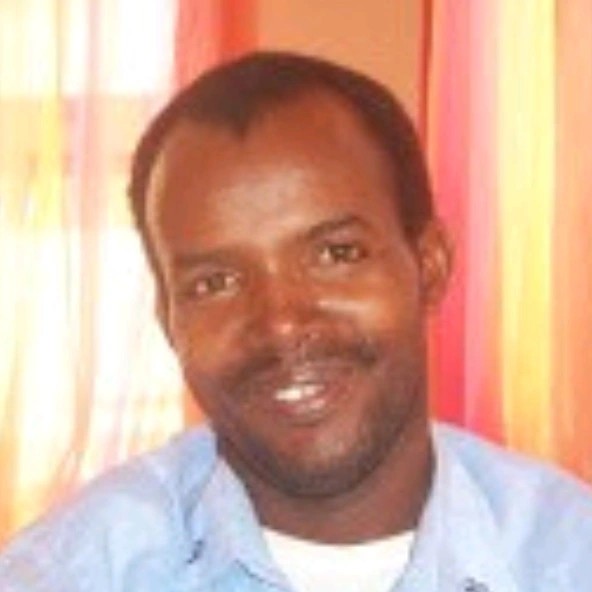
Title: Epidemiological and clinical aspects of care for victims of violence at the Reference Health Center in Commune 4 of the District of Bamako in MALI.
Speaker Presentation
Dr. Brahima Dicko
University Hospital Center (CHU) Point G, Bamako, Mal
Abstract
Introduction: According to the World Health Organisation (WHO), violence is defined as the intentional use of physical force or threats against others or oneself, or against a group or
community, resulting in, or with a high risk of resulting in trauma, psychological damage, developmental problems or death.
Objective: To study the medico-legal aspects of the treatment of victims of violence at the commune IV referral health centre in the District of Bamako.
Methodology: The retrospective and prospective study was carried out from January 2020 to December 2023, i.e. over a period of 48 months, on victims of violence admitted to the
Commune IV referral health centre.
Results: During our study, the Commune IV referral health centre recorded 134 cases of violence. The age group most affected was children under 15, accounting for 36.6% (49
cases) of survivors. Females predominated, with 94% (126 cases) of survivors. Pupils and students were most at risk, with 41.8% (56 cases) of survivors.
The majority of victims were admitted under requisition, with 73.9% (99 cases) of survivors. Sexual assault was the main reason for consultation, accounting for 59% (79 cases), followed by assault and battery (35.1% (47 cases)) and road traffic accidents. The survivors had received analgesic, antibiotic and anti-inflammatory treatment, emergency contraception and local care.
The duration of temporary functional impairment was less than 1 week in 78.4% (105 cases) of the survivors. The duration was between 07 and 20 days in 12.7% (17 cases) of survivors. The duration was greater than 20 days in 3.7% of survivors. The rate of permanent partial work disability was 0% in 98.5% (132 cases) of survivors. Rates between 5% and 10% of permanent partial disability represented 0.7% (1 case).
These injuries are generally caused by the use of violence during the sexual act and the use of knives in some cases. This study enabled us to identify, according to the different modalities, the subjects most exposed to violence.
Conclusion: Violence is a common and serious public health problem, affecting thousands of people every year. These people are subject to a variety of factors operating in economic,
socio-cultural and political contexts.
Biography
Forensic Doctor - Research Officer. At University Hospital of Point G, BAMAKO-MALI. Lecturer at Medical and Odontology Faculty of BAMAKO. I am also: Trainer for Dead Bodies Management for ICRC of MALI.
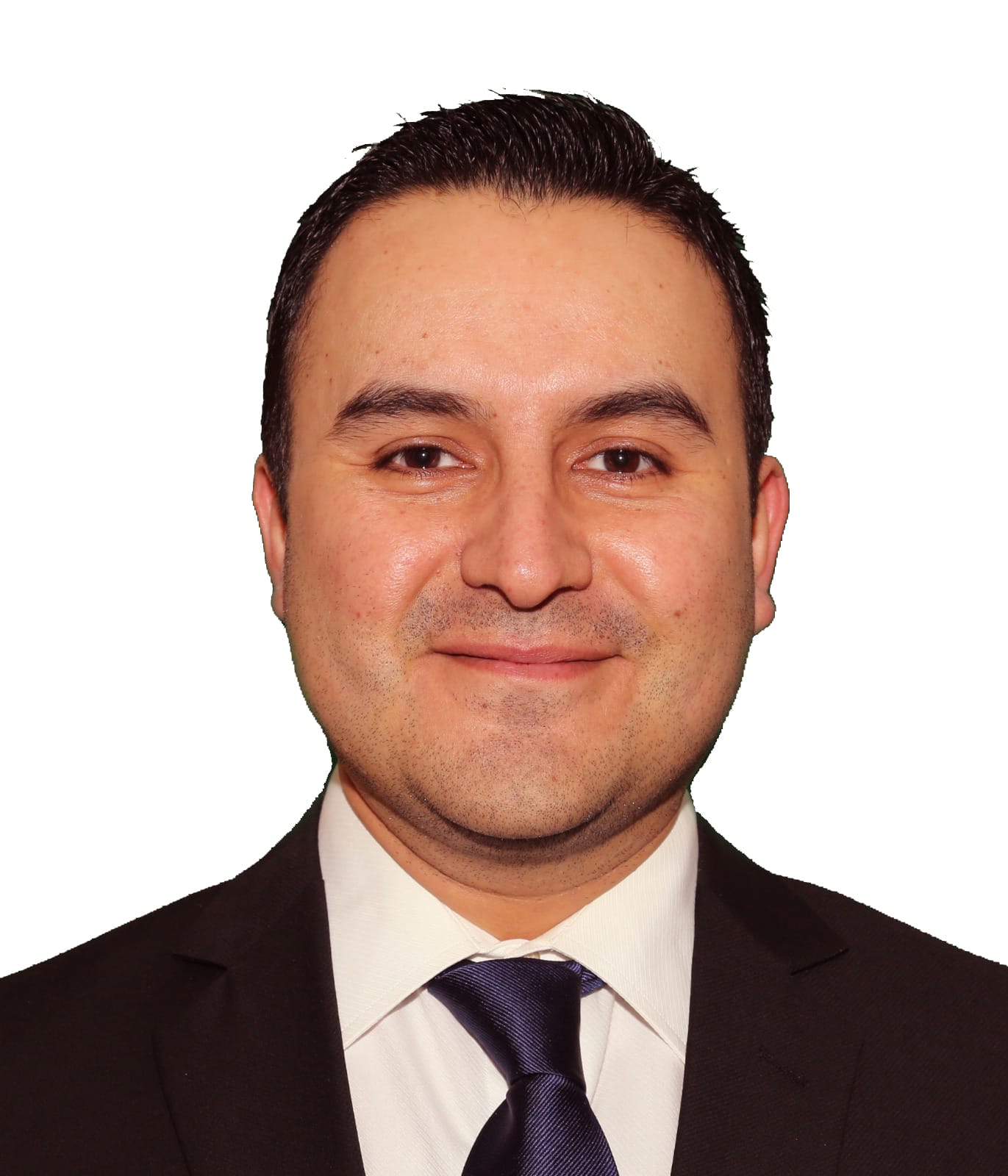
Title: Can unclassifiable lophograms be identified
Speaker Presentation
Waldo Adonis
Copiapó Regional Criminalistics Laboratory of the Chilean Investigative Police (PDI), Chile
Abstract
Regarding human identification, Lophoscopy is one of the most robust branches of technology that allows for this task, as the general characteristics (common patterns: arches, loops, whorls) and specific characteristics (minutiae) present in dermatoglyphics (papillary patterns) are governed by the principles of Perennity (permanence), Immutability (persistence), and Diversiformity (infinite variety), which lends scientific rigor to this area of forensic science. Ectodermal dysplasias are a broad group of hereditary disorders characterized by alterations in structures of ectodermal origin. Although some syndromes may present specific characteristics, many of them share common clinical features. Two main groups of ectodermal dysplasias can be distinguished. One group is characterized by aplasia or hypoplasia of ectodermal tissues, which fail to develop or differentiate due to a lack of reciprocal signaling between the ectoderm and mesoderm. The other group is characterized by palmoplantar keratoderma (thickening), with additional manifestations when other highly specialized epithelia are also affected. In this sense, dysplasias affecting dermatoglyphics (the first group), including dissociated ridges (or vermiform pattern), constitute a challenge in lophoscopic biometric identification because their morphology is very different from the common patterns of fingerprints and their subgroups. Simply put, the algorithms of biometric systems fail to extract minutiae by failing to recognize such shapes, preventing a satisfactory response to these uncommon patterns. This situation is not the case with manual analysis by an expert, whose "expert eye" can discern shapes, extract patterns from the figures, and identify them. This work demonstrates that Galton's principles are applicable to these unusual patterns and that their identification goes hand in hand with ongoing training by experts in pattern analysis. If the pattern analysis is to be applied to biometric systems, these experts must be trained in this area.
Biography
Waldo Adonis graduated as a Biochemist from the University of Santiago de Chile (USACH), holds a Master's degree in Forensic Sciences from the University of Valencia (Spain), is an expert in Forensic Biology, Microdactyloscopy and specialist in Forensic Biometrics, among others. He currently works as an expert in Lophoscopy at the Copiapó Regional Criminalistics Laboratory of the Chilean Investigative Police (PDI), member of IAI, IAI Colombian division, ALEIH, AEFICC, CCIDD, and teaches classes on this subject and related to the forensic field in various Latin American organizations and institutions (Ecuador, Argentina, Dominican Republic, Mexico). His research areas are Descriptive geometry applied to Lofoscopy, Multimodal Biometrics, Cadaveric Rehydration, Footwear and Tire Tracks and Congenital anomalies in fingerprints. International speaker, teacher and consultant.
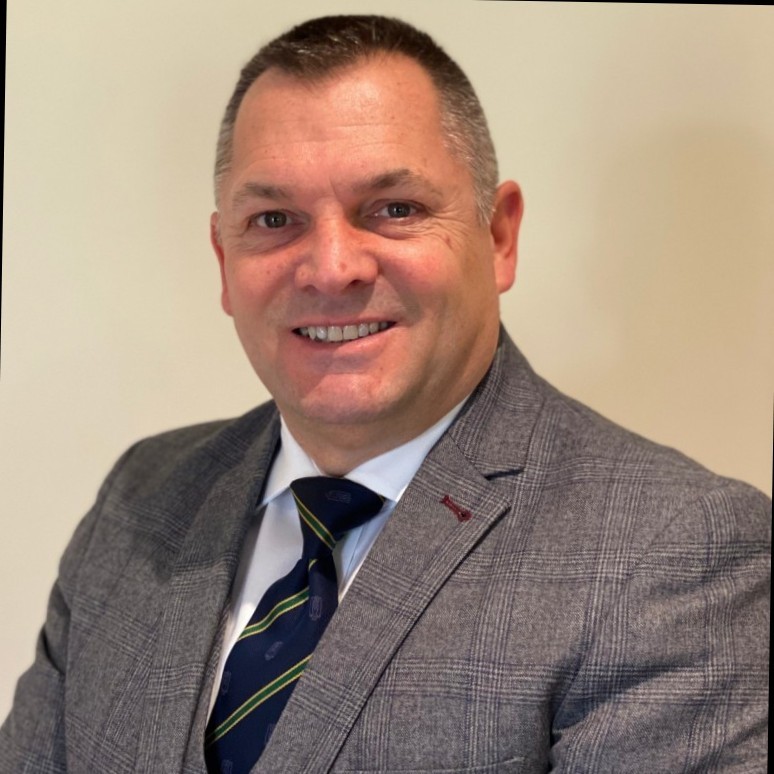
Title: Digital Fraud Has Its Roots in Surveillance Impunity
Keynote Presentation
Andrew Jenkinson
Fintech & Cyber Security Alliance (FITCA)United Kingdom
Abstract
“Digital Fraud Has Its Roots in Surveillance Impunity.” This talk explores how global surveillance, accelerated after the 9/11 attacks, laid the foundation for today’s rampant digital fraud. By tracing the origins of mass data collection, systemic backdoors, and the deliberate neglect of foundational technologies like DNS (Domain Name System) and PKI (Public Key Infrastructure), Jenkinson reveals how cybercriminals now exploit vulnerabilities originally created for intelligence purposes. From nation-state espionage to teenage hackers on the Dark Web, this session exposes the ungoverned architecture of the internet that enables billion-dollar fraud. With real-world examples and a call to educate, regulate, and secure, this presentation demands urgent reform in cybersecurity practices and policy.
Biography
Group CEO CIP. Fellow, Cyber Theory Institute. Director, Fintech & Cyber Security Alliance (FITCA) working with Governments. NAMED A GLOBAL EXPERT IN INTERNET ASSET & DNS VULNERABILITIES
“ Will be updated soon...”
+91 9491 456 452
7-89-1-18, NVR LAYOUT, Madanapalle, Andhra Pradesh 517325, India
About Us
Global Scientific Guild organizes conferences and webinars to promote quality research and real world impact in an atmosphere of true international co-operation between scientists, doctors, professors, practitioners, engineers and industry by bringing together the world class renowned personalities to discuss the latest developments and innovations at one common platform.